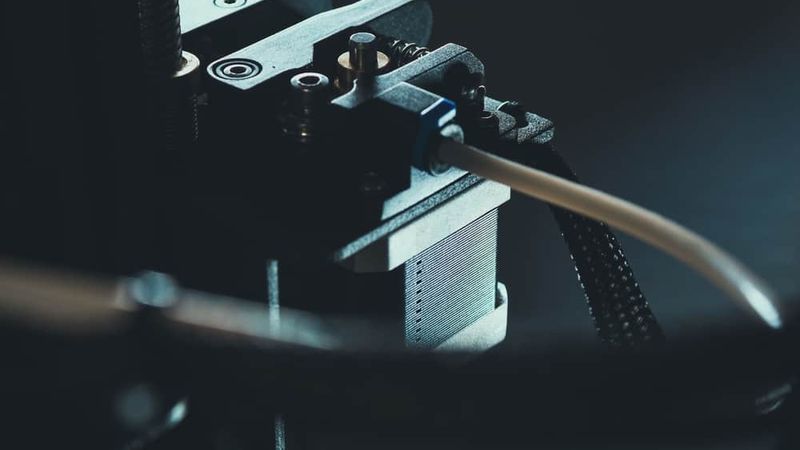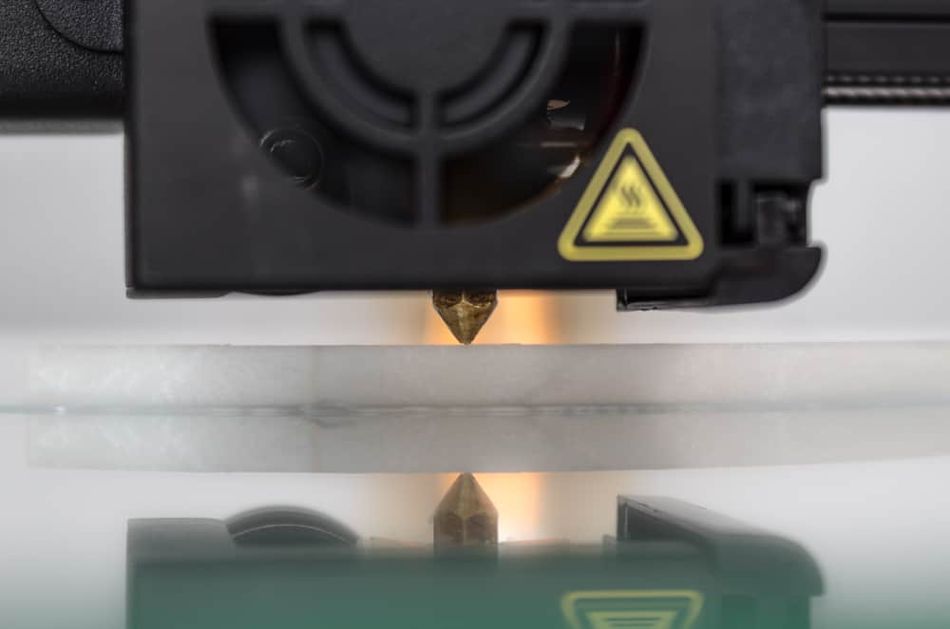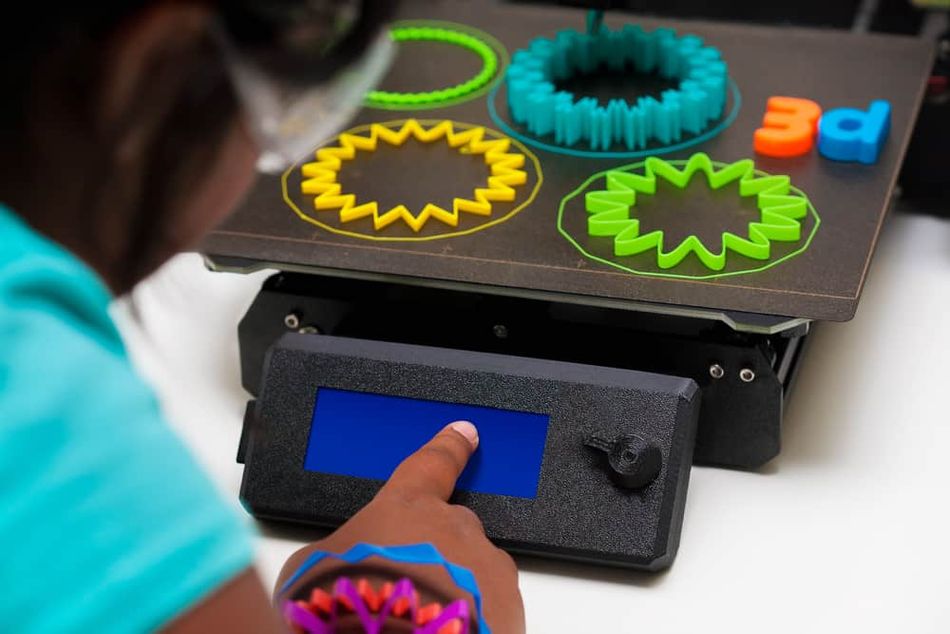Ender 3 (V2,Pro) Bed Size: What You Need to Know
The Creality Ender 3 and its V2/Pro variants have a stated print area of 220 x 220 mm, but the actual bed dimensions are 235 x 235 mm. So can you print right up to the edges or not?

Creality Ender 3 users can extend their build area
With its reasonable print quality, heated bed, and tiny price tag, the Creality Ender 3 FDM 3D printer is the go-to machine for 3D printing hobbyists and DIYers. However, one of its main limitations is its fairly small build volume.
Although Creality sells some larger printers such as the Creality CR-10, many users prefer the Ender 3 (and its V2/Pro variants) for its low price and familiarity. So they have naturally sought after ways to maximize or extend the build area of the budget machine via firmware and hardware modifications.
This article looks at how to exploit the entire print surface of the Ender 3 without investing in a bigger printer.
Ender 3 dimensions
According to Creality’s official website, the Ender 3 (and the V2/Pro) has a print area of 220 x 220 x 250 mm.[1] However, if you get out your ruler, you’ll find that the Ender 3 print bed dimensions are 235 x 235 mm.
The full machine size of the Ender 3 varies by model:
Ender 3: 440 x 440 x 465 mm
Ender 3 V2: 475 x 470 x 620 mm
Ender 3 Pro: 440 x 420 x 465 mm
Difference between Ender 3 bed size and print area explained
The difference between the Ender 3, Ender 3 Pro, and Ender 3 V2 bed size and print area is, as we can see from the dimensions above, 15 mm on both the X and Y axes. In other words, every edge of the bed has 7.5 mm of unprintable space. But why is this?
Clips
The principal reason why the print volume of the Ender 3 differs from the actual dimensions of the build plate is clips.
The Ender 3’s removable build plate is attached to the print bed with standard office binder clips, which encroach upon the usable area of the build plate. Accordingly, Creality has written the 220 x 220 mm print size into its firmware, helpfully preventing users from printing over those clips and getting failed prints.
The problem here — and the reason why many Ender 3 users have been tackling this issue for years — is that you don’t have to use clips to attach a build surface if you swap out the Creality-supplied equipment with a replacement. In fact, the Ender 3 Pro actually ships with a magnetic build surface.
It’s also possible to use clips that are more compact than binder clips, freeing up more potential printing space around the edges of the build surface. Alternatively, users may only put clips on two of the four sides of the bed, giving them something like 220 x 235 mm of potentially usable print area.
Extra allowance
The other reason why Creality adds 15 mm of buffer on the X and Y axes is to anticipate misalignment and other errors that could cause the printhead to deposit material off the edge of the print bed.
Just as a 2D printer prints within a margin to avoid printing over the edge of the page, a 3D printer works best when it isn’t instructed to print right up against the edge of the build surface.

How to increase the print area of the Ender 3
If 220 x 220 mm won’t cut it for your prints, there are a few ways to increase the Ender 3, Ender 3 Pro, and Ender 3 V2 bed size (or simply exploit more of it), though the most effective ways may be unsuitable for beginners. The three possible strategies involve adjustments to firmware, hardware, and slicing software.
Firmware upgrade
The Ender 3 print area of 220 x 220 mm is specified in the 3D printer’s firmware — the basic machine software that enables the hardware to function. This means that you can’t just tell your slicing software to print over and above these limits: the firmware will tell the machine that such an action is impossible.
Fortunately, if you’ve made physical space at the edge of your build surface (by swapping the clips for smaller ones, for example, or replacing the build surface with a magnetic one), you can update your Ender 3 firmware to specify a larger build area, permitting marginally bigger prints.
The Creality-installed firmware can’t be modified, so you’ll need to replace it with either Marlin or Jyers firmware. This is easier to do with the Ender 3 V2 because it comes with a pre-installed bootloader, but is trickier with the other models.
The Jyers Github page contains several optimized versions of Marlin firmware that can be flashed onto the Ender 3 V2 using a micro SD card. This process replaces the Creality firmware with Jyers firmware, which permits changing of the print volume.
Although it is possible to specify a print size of 235 x 235 mm, most users will stick to 230 x 230 mm, which still adds a significant 10 mm to the X and Y axes without running the risk of failed prints.
Physical bed extension
If you’re desperately trying to squeeze another 10–15 mm out of your X and Y axes, chances are the Ender 3 bed might simply be too small for you.
Fortunately, it is possible to modify the printer and physically extend its print bed. Again, this is much easier with the Ender 3 V2, as a physical bed extension will require a firmware upgrade and adjustment of parameters so the printer knows how much bed area it has to print on.
Products like the Ender Extender and Endzilla are kits that allow for DIY replacement of the print bed, typically containing parts like a new build plate, frame parts, screws, washers, and nuts.
With such a modification, the Ender 3 V2 bed size can be increased. Both the Ender Extender and Endzilla brands have kits that boost the Ender 3 (V2/Pro) bed size to 400 x 400 mm — much larger than the original dimensions, and also larger than any printer in Creality’s Ender range.
One obvious drawback of this approach is the price of a bed extender. The Ender Extender 400 currently sells for $179, taking the total price of the printer plus the modification to almost $400. At that point, buyers might consider buying a larger printer.
Priming and skirt settings
A slicer such as Cura can’t trick your Ender 3 into printing beyond its 220 x 220 mm boundary. However, if your settings aren’t configured the way you want them, you might be getting even less printing area than that.
The key settings to look into here are skirt settings. In Cura, skirt parameters fall under Build Plate Adhesion settings in Print Setup. In 3D printing, a skirt is an outline of extruded filament that goes around the printed part but doesn’t actually connect to it. It is principally used to prime the extruder and ensure that the printhead is depositing material smoothly and evenly before it begins extrusion for the actual part.[2]
Although useful, skirts reduce the printable area, because they must fully surround the printed part. Reducing the skirt line count to 1 or even 0 may be necessary in order to exploit the full size of the print surface.

Recommended reading: Best Ender 3 (Pro) Cura settings: temperature, speed, retraction, more
Creality 3D printers size chart
Within the Creality Ender range, the larger build areas can be found in the various “Plus” and “Max” models. Newer models with the “Neo” tag tend to have a similar or identical build volume to their specific predecessor but with additional features.
Within the wider Creality range, large-format printers like the CR-10 Max ( 450 x 450 x 470 mm) offer even larger print areas but at significantly higher prices.
Ender 3 | Ender 3 V2 | Ender 3 Pro | Ender 3 S1 | Ender 3 S1 Plus | Ender 3 Max | Ender 5 Pro | Ender 5 Plus | Ender 7 | |
Print area (mm) | 220 x 220 x 250 | 220 x 220 x 250 | 220 x 220 x 250 | 220 x 220 x 270 | 300 x 300 x 300 | 300 x 300 x 340 | 220 x 220 x 300 | 350 x 350 x 400 | 250 x 250 x 300 |
Price ($) | 189 | 208 | 236 | 329 | 529 | 259 | 399 | 579 | 489 |
Key takeaways
Hands-on users of the Ender 3 might feel that a firmware upgrade and small or large physical modification of the printer is well worth it to achieve larger builds. Beginners and casual users, on the other hand, might find it more trouble than it’s worth.
Recommended reading: PETG vs PLA: How do they compare?
References
[1] Ender-3 3D printer [Internet]. Creality. [cited 2023Feb21]. Available from: https://www.creality.com/products/ender-3-3d-printer
[2] Dave HK, Patel ST. Introduction to Fused Deposition Modeling Based 3D Printing Process. Fused Deposition Modeling Based 3D Printing. 2021:1-21.
